Best jackets for bikepacking and gravel – packable all-day protection
The best packable, weatherproof cycling jackets for off-road adventures
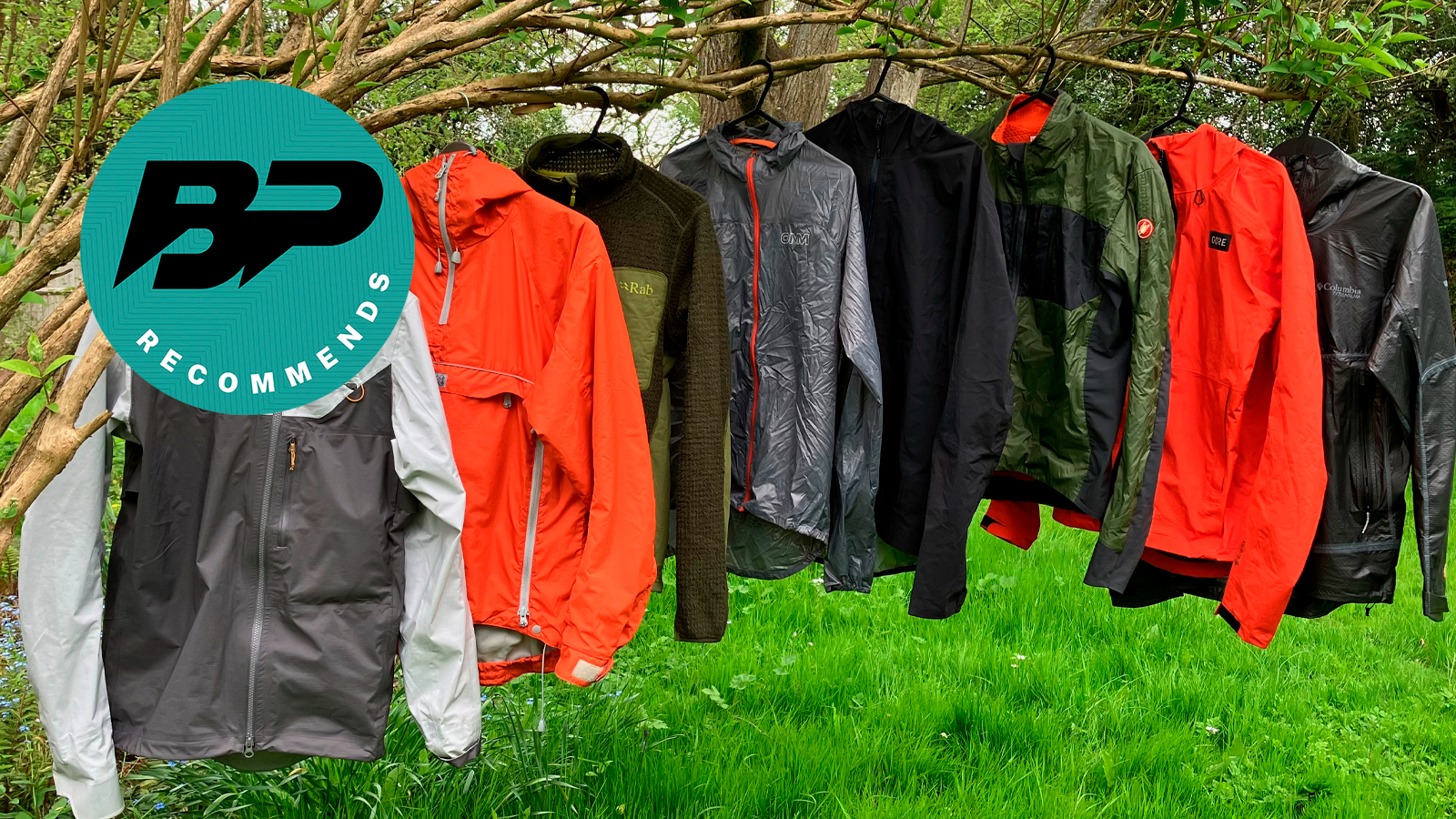
The best jackets for gravel riding and bikepacking often overlap with the best MTB jackets, with maybe more emphasis on packability, and less need for crashability. The main things we are looking for are comfort in all seasons, and ideally, something you can leave on and forget about through changes in weather and effort.
In terms of fit, we want the jacket to have more space for layers and movement than road jackets, but still be at the more streamlined end of things. We want long enough rear hems and sleeves for when you’re stretched out; and hoods are high on the list for all-day forays into the wild.
We’ve divided this guide into waterproof shells and windproofs, and we've also included a couple of insulated jackets you could ride in (but we haven’t included down jackets for camp in this guide).
As our test team knows from having tested a great many jackets over the years, nothing is both waterproof enough and breathable enough, if you’re reasonably active. So the smart money is on embracing the moisture, layering to stay warm when damp, and deciding whether the conditions and your mindset are better suited to getting a little wet from rain or from sweat. See this Bespoken Word column from our tech editor Guy Kesteven for more on that.
Either way, while there’s no one jacket to rule them all 24-7/365, this selection of jackets for gravel riding and bikepacking will give you food for thought for your off-road exploration, from bright dry summer day rides with cold starts, to bivvying in chilly November.
Best waterproof jackets
A waterproof cycling shell jacket offers a barrier to rain and wind in a relatively light package, while doing its best to let sweat out. If you’re out in the foulest weather, or you just don’t trust the ‘damp but warm’ philosophy of more breathable windproofs, you’ll lean towards a waterproof shell.
The jackets here represent a good spectrum of value, protection and packability, including a couple of angles you might not have considered.
Check out the FAQs at the end of this article for questions such as whether jackets will inevitably wet out as they get older; and whether more robust generally means more waterproof.
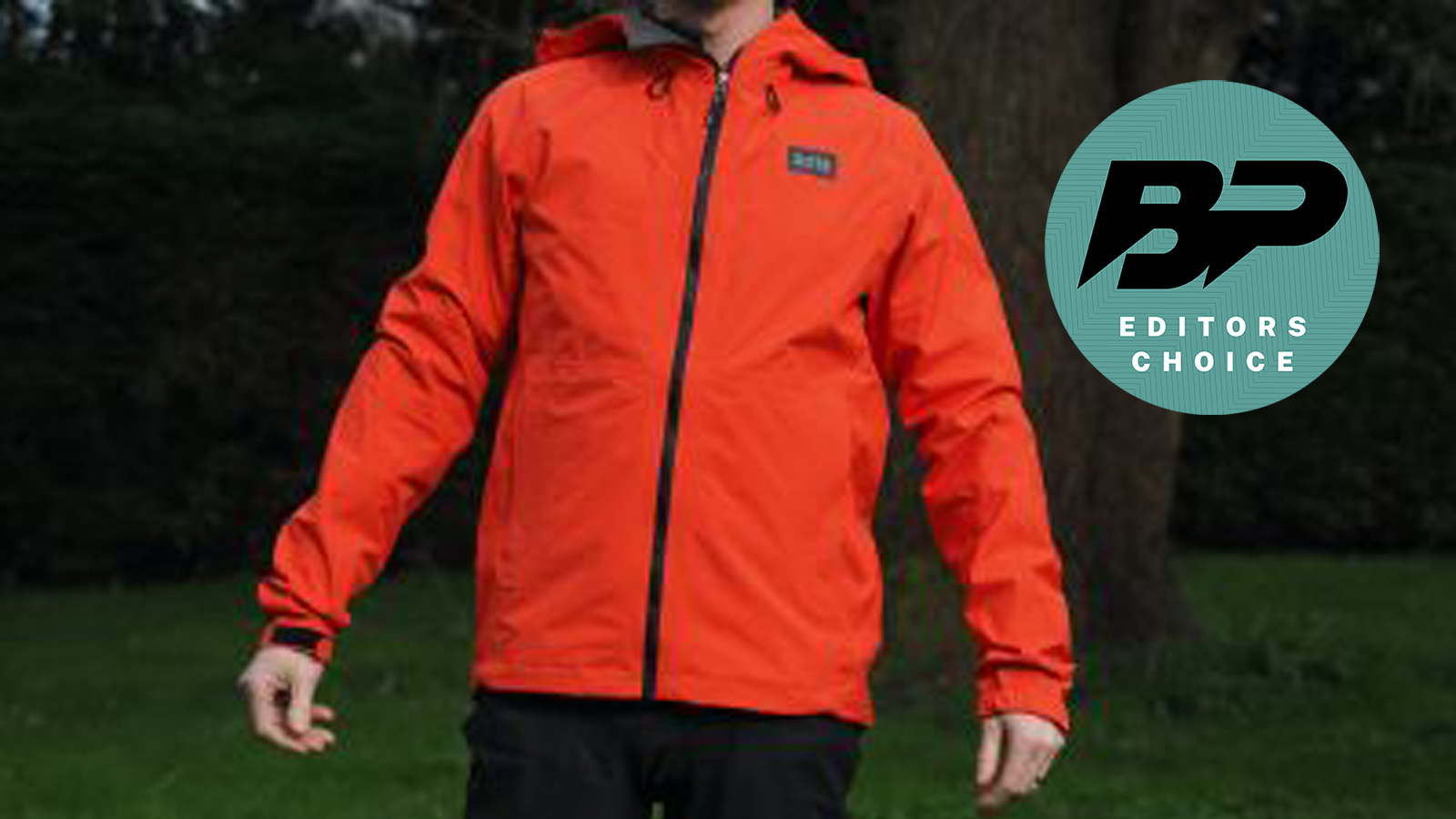
Gore Endure Jacket
Specifications
Reasons to buy
Reasons to avoid
The Endure Jacket is made from Gore’s Paclite Plus fabric, which sits midway in its range for breathability and durability, and high for packability. We found it an easy jacket to like. The features are intelligently designed, right down to a non-slip strip on the hood to keep it in place over a helmet. And when the weather comes in, the drawcords cinch it in nicely around the collar and hem, and the high neckline does a good job of keeping rain and draughts out.
At 286g for a medium, it was midweight, and like most of the jackets here, the straight cut means you’re not going to mistake it for a road jacket, but we didn’t find it flappy, and it felt natural on and off the bike.
Even though it’s not at the top of Gore’s fabric tree, in testing we found the rain stayed out even in the worst conditions, and it felt ‘steadily’ breathable – that is, at least as good as most other mid-premium jackets. Like most, it struggled on short sharp efforts when the temperatures were in double digits (50F+), and vents would’ve been handy here. On the positive side, we found it doesn’t feel clammy against bare skin, and the sleeves can be hoiked up easily, so it’s not bad to wear with just a short-sleeved base in mild wet spells.

Decathlon Rockrider All-Mountain Waterproof Jacket
Specifications
Reasons to buy
Reasons to avoid
This is a smashing jacket for £90, with features that we were surprised to see at the price. The fit and the arm movement are spot on for all-round off-road cycling, and there’s room for layers without flappiness. With the hood up over a helmet you can move your head naturally without tightness, as on the best more expensive jackets. We don’t tend to have super-high hopes for water resistance and breathability in sub-$/£100 jackets, but the Rockrider has stood up reassuringly well in our tests in the foulest windy rain so far.
Neat features include soft stretch cuffs inside the main cuffs, and flaps that you can fold down over the backs of your hands; a soft hem around the chin; and drawstrings around the collar and waistband.
Down sides are few. At 416g, it’s a bit chunkier than the 200-300g we’d typically aim for in a bikepacking jacket, there’s only one pocket, and while the offset zip is a neat way of keeping it out of the way of your chin, it might take a bit of getting used to.

DHB Trail Waterproof Jacket
Specifications
Reasons to buy
Reasons to avoid
The DHB Trail Waterproof Jacket was one we reached for more than we expected to, in conditions from drizzle to persistent rain, and particularly when we didn’t have much packing space. It hit a really nice sweet spot between weight and protection, with enough breathability from the fabric and the underarm vents that it didn't feel like a big decision to sling it on.
At 198g, it’s one of the lightest jackets in this test. It’s pretty flexible and it will just about pack down into a jersey pocket, but it doesn’t feel flimsy. It certainly held up fine during our testing, as did the DWR, which showed little signs of wearing after a number of weeks. I particularly liked the fit – it was slim but movement was very easy, even with the hood snugly over a helmet.
As is reasonable for a lightweight mid-price jacket, some of the features are on the simple side – the cuffs and rear hem are simply elasticated, the inner pocket is a bit of a squeeze even for a small phone the zip, and the only outer pocket is round the back. I’d probably pick something slightly more substantial for consecutive days of the foulest weather, but generally this is a very likeable jacket.
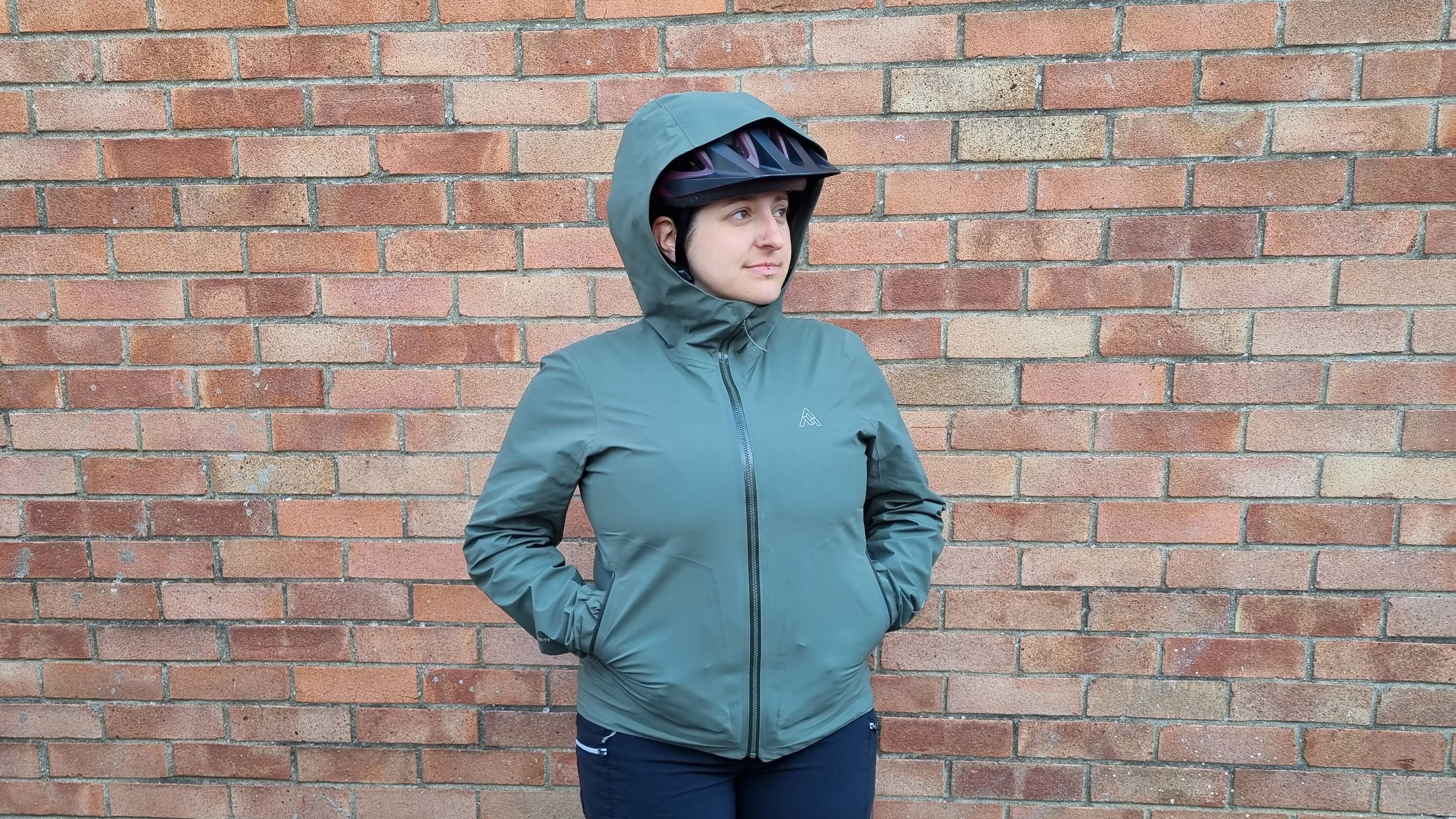
Specifications
Reasons to buy
Reasons to avoid
Gore-Tex Active is one step up from Paclite in terms of breathability, and this is what the Skypilot is made from. The waterproofing will be at least as good, too, as our tester concurs via her ‘paper in the pocket’ test in rainstorms. 7mesh has managed to get the weight down to 234g for a large, which is impressive for such a protective jacket.
At $370 / £300, you’re certainly paying for this Goldilocks balance of performance and packability, but the only way you can get much better in terms of Gore fabrics is to nudge $500/£400 for Gore-Tex Pro, which also carries a weight cost.
The good news is that 7mesh knows its onions when it comes to design, so you’re not just paying for clever fabric. Our tester described the fit as relaxed but close, and liked the classy aesthetic of the Skypilot, along with features like generously sized pockets and a watertight zipper. Her only niggle was the hood which she found flappy when not in use.
For more details, read our full review of the 7mesh Skypilot.
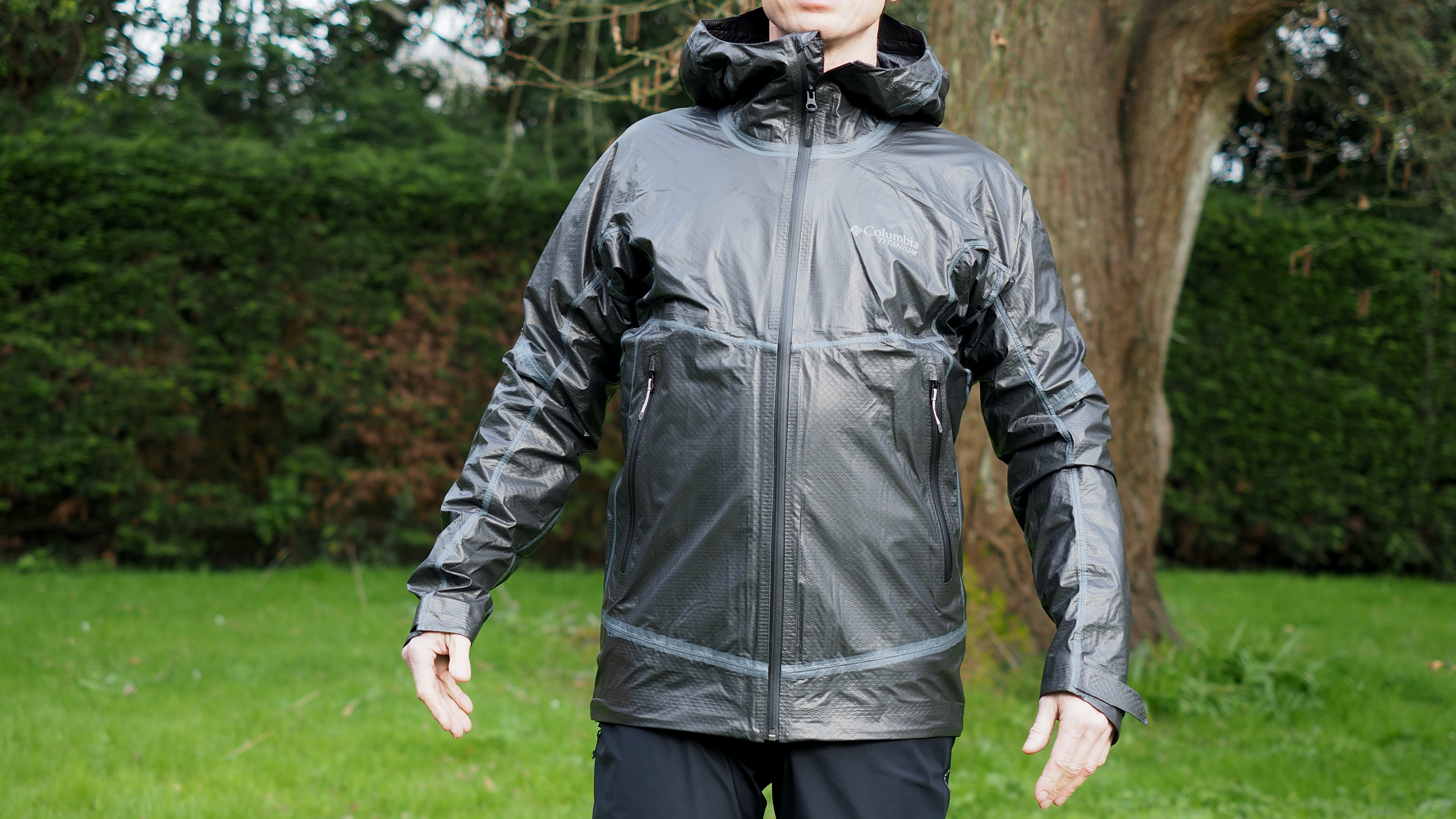
Columbia OutDry Extreme Mesh Shell
Specifications
Reasons to buy
Reasons to avoid
If you get fed up with the water-repellent coating (DWR) on normal jackets wearing off and you don’t have any luck re-proofing them, Columbia’s OutDry might be music to your ears. The waterproof membrane and taping sit on the outside of the jacket instead of the inside, so water beads on the jacket and there’s no coating to wear out. (This is also good news for the environment, as there’s no need for toxic DWR chemicals.) The inner face of the jacket has a light wicking mesh bonded to it.
Despite the external membrane, in testing we found the jacket is far less delicate than, say, Gore Wear’s legendary Shakedry jacket, which makes it more suitable for gravel and bivvying, and it has dedicated fans among the users of the BareBones bikepacking forum. We found it decently if not jaw-droppingly breathable, and it will never suffer from the outer fabric getting waterlogged and reducing warmth and breathability.
The OutDry Extreme Mesh Shell has its quirks, and not just for its shiny looks. We found the hood fits better under a helmet than over, and that even the smallest size (S) was a bit big for a 173cm male – Columbia agrees that they do size a bit large. It’s fairly expensive at full price but not hard to find on sale.

Paramo Velez Adventure Light Smock
Specifications
Reasons to buy
Reasons to avoid
This guide could have featured a dozen different 200-300g hardshell jackets at different price points, but you’ve probably got the picture on membrane-based hardshells by now. Paramo does its waterproofing differently, and while its products aren’t for all cycling scenarios, they’re worth a look.
Instead of using a membrane to seal out water, Paramo focuses on getting moisture out faster than it comes in. Its outer layer uses a (non-toxic) water repellent coating to slow the ingress, and its inner layer pumps moisture out using a technique called capillary depression. Unlike membranes, it can move liquid as well as water vapour from the inner to the outer layer. The double layer build does make it heavy – 588g for a size small – but it does mean you don’t need as much on underneath.
Our first real trial of the Velez Light Smock was mountain biking in wind and sleet at 4-6C (39-42F) on the Welsh Borders, with just a thin winter base underneath. It was pretty much perfect for that, like a breathable waterproof cocoon, and its softness and comfort meant it got grabbed for hiking on that holiday as well. It just feels very relaxed and natural to wear, helped by its soft feel, its massive side vents and easily pull-uppable sleeves. You wouldn’t buy it as your do-everything cycling jacket because it’s too warm for efforts as temperatures get towards double figures (10C/50F), but if you’re a general outdoors person, you could get plenty of value out of it.
Best windproof jackets
As Guy argues regularly, one alternative to wrestling with changing temperatures in a waterproof jacket, is to use a softshell that’s more breathable, while still being windproof, and water resistant. This is on the basis that with the right layering you’ll stay warm inside even if damp is getting in, and your body will have a decent chance of drying your layers out because the water vapour will leave faster than in a waterproof. It’s not an option for seriously heavy weather, but fans are surprised at how water resistant some of these jackets are.
Here we include two leave-on options, and a superlight packable option that you could use in addition to a regular waterproof shell.

Specifications
Reasons to buy
Reasons to avoid
If there’s one company that understands being active in British weather, it’s Rab. Its new Cinder range adapts its most breathable technology for off-road cycling, and its Kinetic jacket hits a sweet balance between being waterproof enough and very breathable. Rab gives it a 3 out of 5 rating for waterproofing and a 5 out of 5 for breathability, windproofing and stretch, compared with its other products. Our tester Guy found no problems with the waterproofing and was impressed by the durability of the PFC-free water-repellent coating. And most importantly, he raved about the breathability, starting to overheat only at race-level efforts.
Even when it does get damp inside, the windproofing keeps the chill off, and crucially, the breathability allows the dampness to escape relatively quickly.
Other features that impressed were the draught-free ‘close casual’ cut, generous pockets, helmet-friendly hood with a useful peak, and fleece-lined chin guard. At 325g it’s a middleweight bivvying jacket, and its muted colours may not be for everyone, but otherwise Guy struggled to find a bad word to say about it.
See the full review of the Rab Cinder Kinetic Waterproof Jacket.
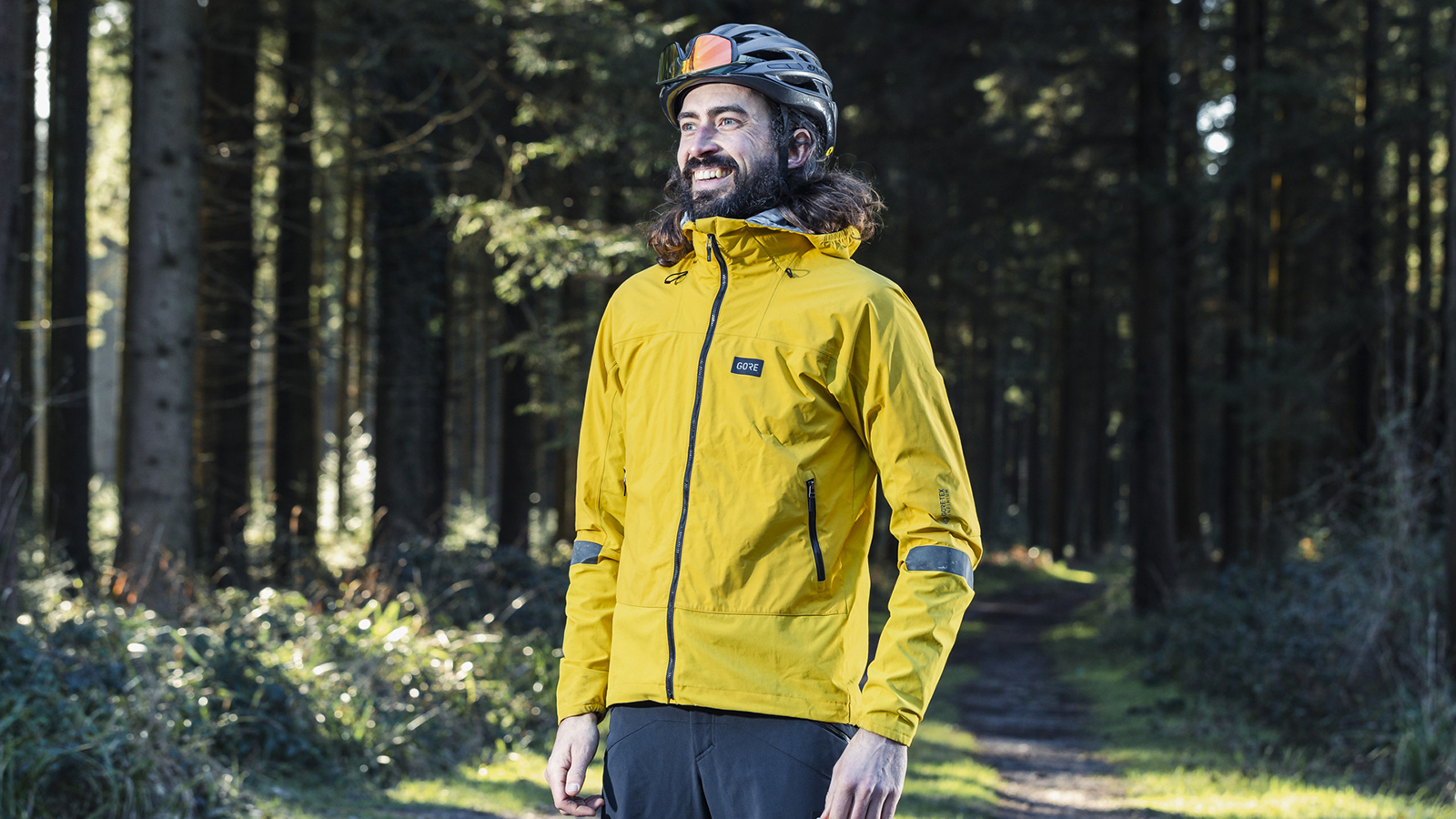
Specifications
Reasons to buy
Reasons to avoid
The Lupra is made with a combination of materials – wind and light rain protection on the front, and stretch breathable fabric on the back. The more exposed hood and shoulder areas also have taped seams. This strategic placement of different materials is designed to give protection where you need it the most, but with more breathability than a full waterproof.
The fit particularly impressed our tester. There’s a long back and ingenious pullcords to keep the drop tail in place; perfectly pre-shaped sleeves that let you move your arms without moving the body of the jacket; and a generous hood.
The Lupra Jacket became our tester’s go-to transition season outer layer, in fall temperatures from 7 to 18C, with a merino base layer underneath. It’s easy to recommend for gravel riding and mountain biking; but while at 315g it’s light enough for multi-day bikepacking, you’d probably want to take a full waterproof unless you were sure of the forecast.
Read more in our full Gore Lupra Jacket review.
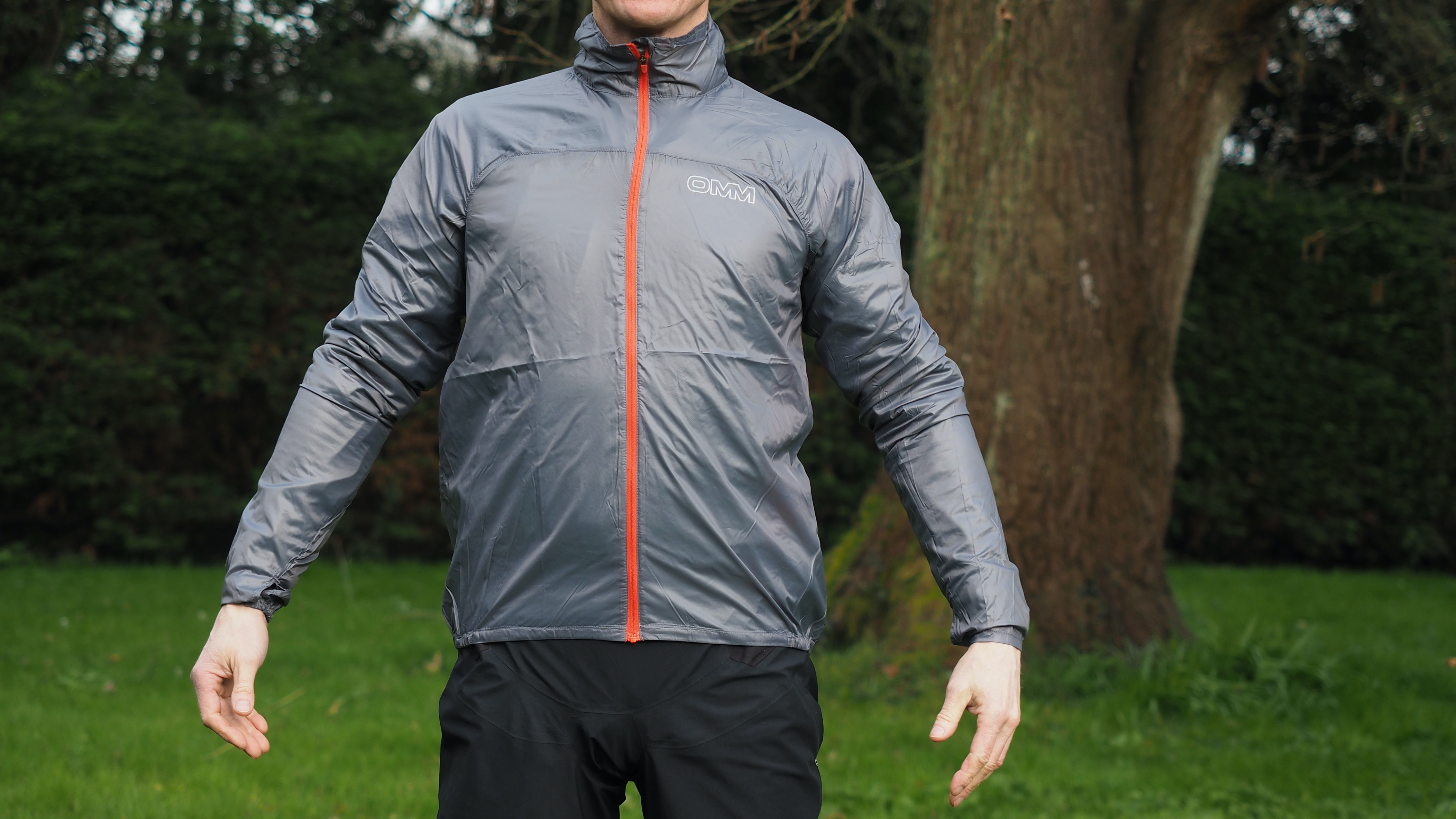
Specifications
Reasons to buy
Reasons to avoid
Instead of trying – and failing – to find one jacket that maximises waterproofing and breathability, you could supplement your not-so-breathable waterproof with a featherweight, highly breathable windproof. This means that when it’s too chilly or breezy for just a jersey, you don’t have to pull on a full waterproof to stop your core temperature being whipped away by the wind.
There are plenty of options, from the generic windproof cyclists’ gilet, through to the perennially popular 200g Pertex Buffalo Windshirt. But if you want to keep it super light and long-sleeved, something like the Sonic Jacket from adventure running brand OMM is worth your attention. As small and light as an energy bar, and as thin as parachute material, we found that it packed a ridiculous amount of wind protection for something you can hardly tell you’re wearing. (We also stayed surprisingly dry even when we pushed it beyond its intended limits and let the rain soak through for a while – presumably because our base layer could still wick and the jacket could breathe.)
It’s not 100 percent perfect for off-road cyclists – it probably wouldn’t enjoy a gravelly crash, although it’s been fine for pulling on and off for a few weeks of testing. It’s got a nice slender fit, and it’s long enough for cyclists, though we did find a curious amount of wind vibration in some breezes.
For more info, see our full OMM Sonic Jacket review.
Best light insulated jackets
While layering is at the heart of staying warm and comfortable on a bike, there’s a definite time and place for highly breathable jackets with a little insulation built in. We look at two lightweight options with built-in shells, which are perfect for all-day messing around; and a shell-less mid-layer which might be a better alternative for multi-day trips as you can pair it with the best shell for the conditions.
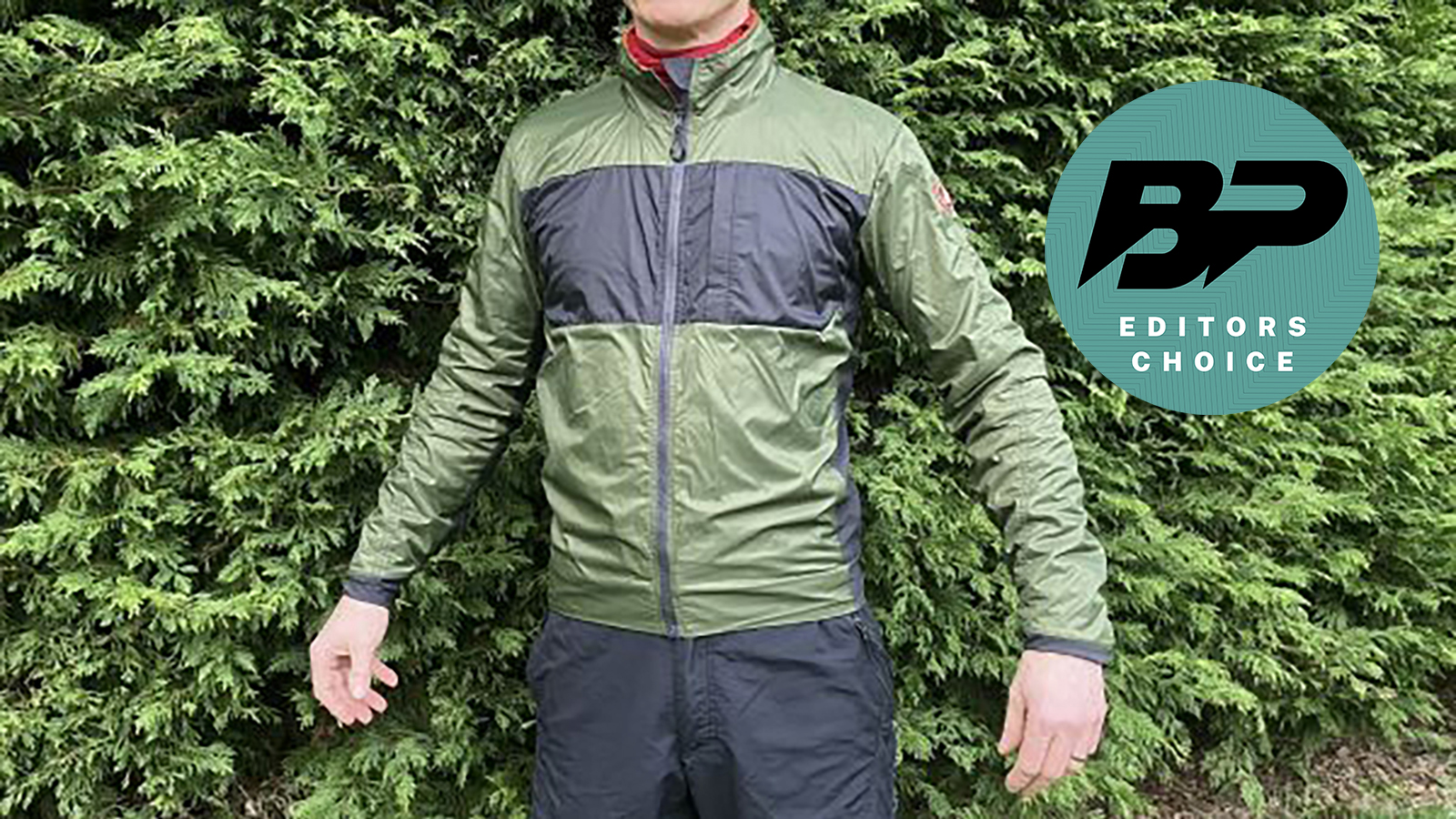
Specifications
Reasons to buy
Reasons to avoid
One of my favorite jackets for gravel day rides this winter has been the Castelli Unlimited Puffy, which combines a windproof shell with a Polartec Alpha lining. With just a base layer underneath it’s been freakishly breathable and warm at the same time, and has been fine in showers.
The Unlimited Puffy is mostly made from a very thin windproof microfiber outer shell, lined with Polartec Alpha Direct, which is a very open-threaded fleece. The panels on the side of the body and the backs of the sleeves are made from an unlined, slightly stretchy fabric. It weighs 217g for a size medium, which is about the same as a very lightweight waterproof jacket and not much more than a thick base layer.
The genius is that the open fleece traps warm air but allows huge breathability, so you barely notice you’re wearing it. Wearing it in winter and spring between about 3C and 12C (37-54F) with just a base layer underneath, I’d describe it as a great ‘messing around all day’ jacket.
The unlined stretch panels up the side body and the backs of the arms help breathability and movement, but they don’t give enough insulation to make this a wandering around camp jacket.
Read our full Castelli Unlimited Puffy Jacket review.
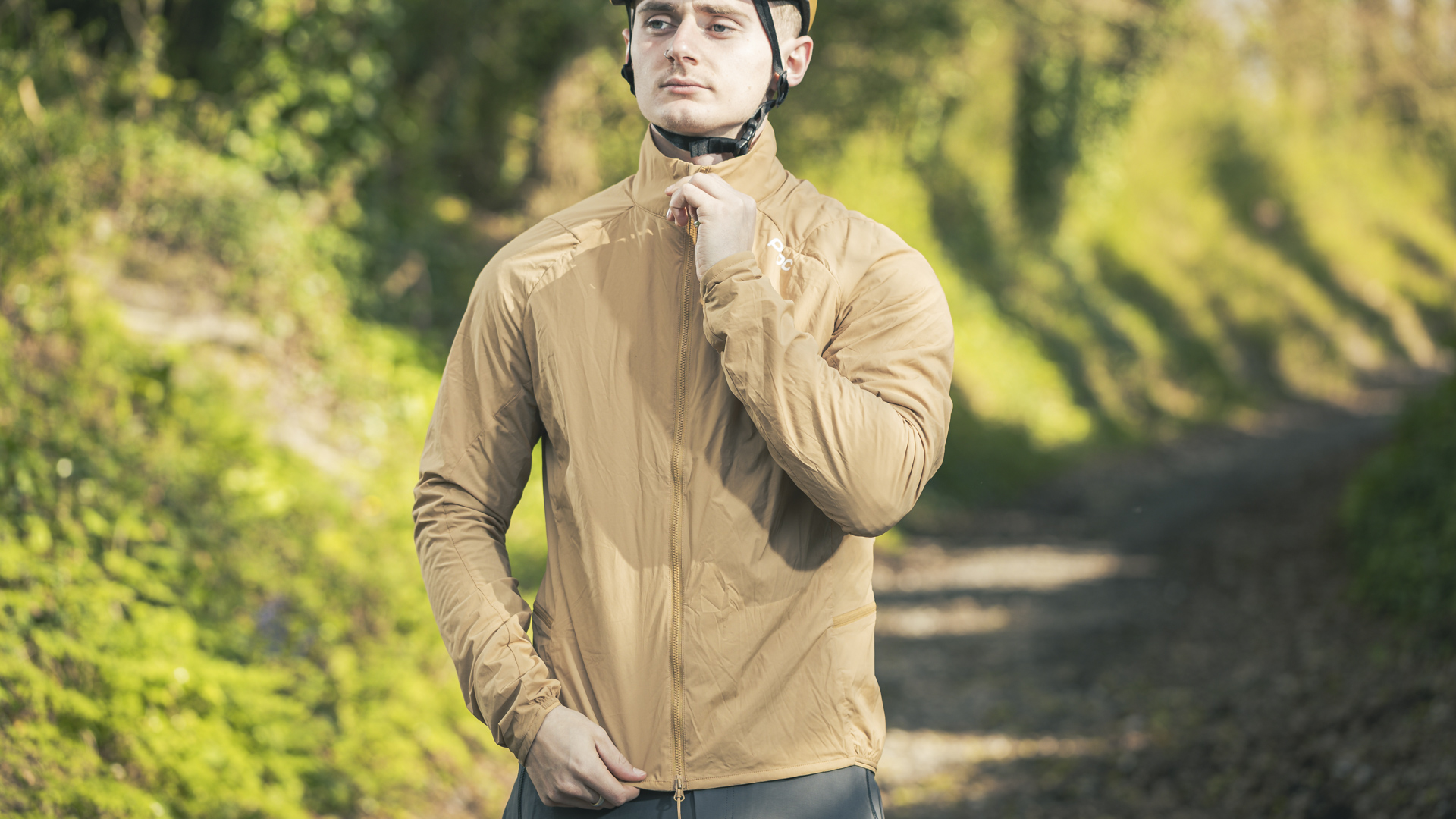
Specifications
Reasons to buy
Reasons to avoid
Like the Castelli Unlimited Puffy Jacket, the POC Pro Thermal combines a windproof, showerproof outer with strategically placed lightweight thermal panels inside. Instead of Polartec Alpha fleece, it uses a thermal mesh, which impressed our tester with its warmth and wicking ability. He also appreciated the slim cut, the pre-curved sleeves, and the intelligently placed pockets, which were generous without sagging when full.
The Pro Thermal Jacket earned its stripes in a wider range of conditions than our tester first expected; with a thermal base layer it more than held up on frosty morning starts, as well as on the milder days of the transition seasons. The venting also impressed with under-arm gills and a double-ended zip.
Read more from our tester in the full POC Pro Thermal Jacket review.

Rab Alpha Flash Jacket
Specifications
Reasons to buy
Reasons to avoid
While Polartec Alpha jackets continue to blow our testers away with their all-day natural warmth and breathability, the one down side is that the very open fleece has to be combined with a windproof shell to retain warmth.
While this design is fine in showers, and surprisingly warm when damp, if it really tips down you either have to take the Polartec jacket off and put a rain shell on, losing its thermal benefit, or you have to put a shell over the Polartec jacket, meaning you’d have two shell layers to sweat through.
Rab’s Alpha Flash Jacket is just made of the Polartec Alpha inner, which gives you the versatility to pair it with whichever shell you need. So on a bivvying trip you could take it with a 50g OMM Sonic windproof (above), a 200-300g waterproof, and still have change from 550g, while enjoying the potential of five jacket combinations. (The Alpha Flash Jacket weighs 206g for a small.)
In our tests, we’ve found it a reassuring companion for spring bivvying. The slim but flexible cut works nicely under almost any shell, and even though it’s not intended for use without a shell because the breeze goes straight through the super-breathable fleece, we’ve found ourselves wearing it by itself on mild days too.
Meet the testers
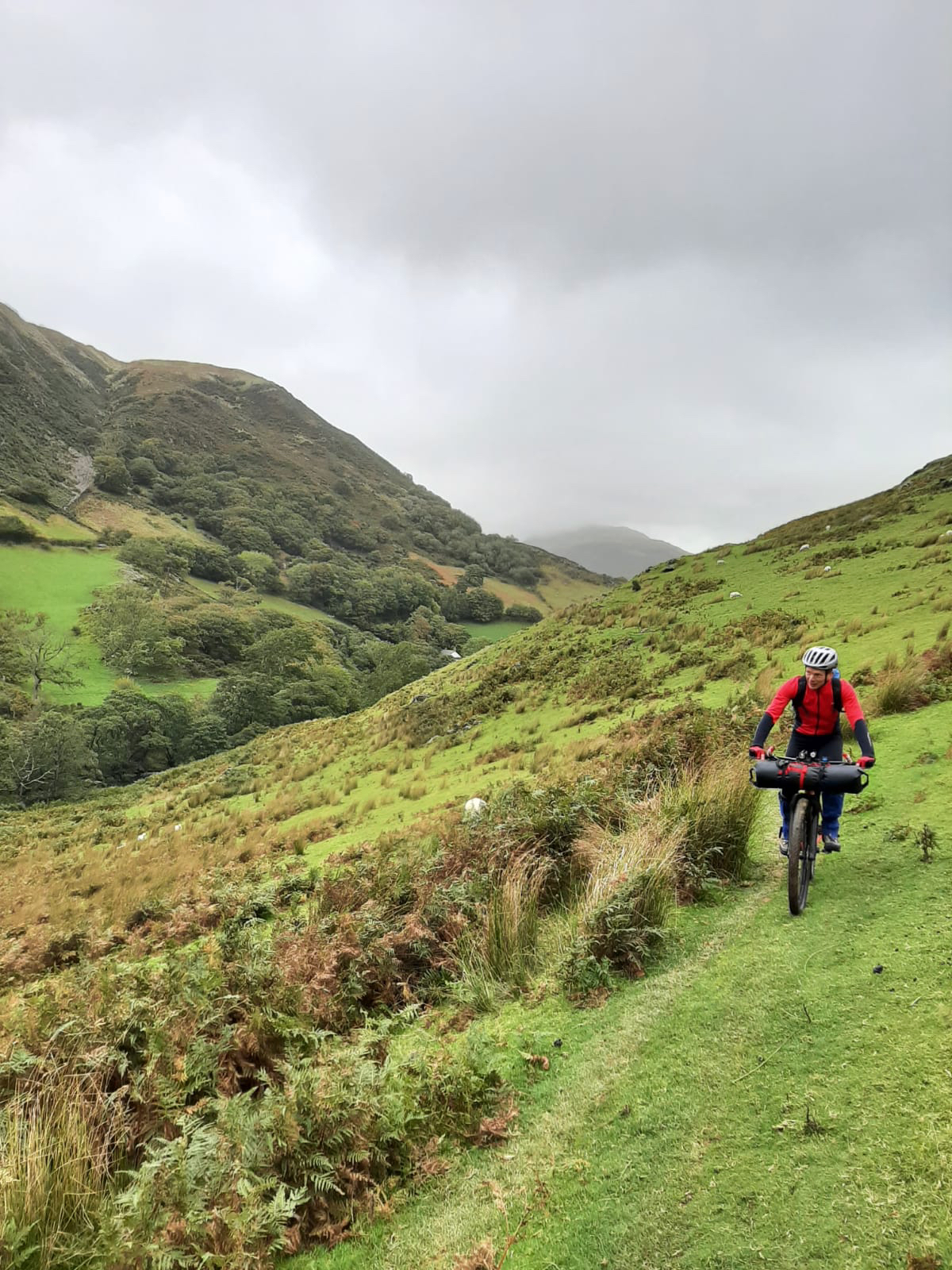
Sean's a soft southerner, but while some of his gravel riding and bivvying is on the South Downs and Kent, he's also in his element in Wales and the North. He's enjoyed Yorkshire bikepacking in February and solo South Downs one-dayers and after multiple jacket experiments, from boil in the bag to freeze in the wind, he's glad to get down to a sensible shortlist.

Guy has written several million words about several thousand test bikes and a ridiculous amount of riding gear. To make sure he rarely sleeps and to fund his custom tandem habit, he’s also penned a handful of bike-related books and talks to a GoPro for YouTube, too.

Russell has been heavily involved in mountain biking for decades. He originally started out designing and building trail center routes, but soon moved specializing in MTB photography and product testing. Over the years, he's shot and written for just about every British MTB mag and website in existence, including MBUK, What Mountain Bike, Bikeradar.com and most recently Bikeperfect.com.

Mildred enjoys everything from road cycling to mountain biking, but is a utilitarian cyclist at heart. She’s spent over four years volunteering as a mechanic and workshop coordinator at the Bristol Bike Project.
Best jackets for gravel and bikepacking: your questions answered
How much should I spend on a jacket for gravel and bikepacking?
The very cheapest generic jackets will simply let rain through, or they’ll be very sweaty, or both. Fine for an emergency short commute, but not what you want on the hill. That said, you can find decent starter options from bike-specific brands under $/£100, as our guide to best budget waterproof jackets shows. From $/£100-200 you tend to get better cuts, so the jackets don’t flap and let you move easily without tight spots, and the waterproofing and breathability are usually better. Over $/£200 ups the game again, and many jackets will be using a Gore-Tex membrane here, but no amount of money will keep you 100 percent dry. If you’re happy to forgo some waterproofing for breathability and focus on layering to stay warm while a little damp, you’ll get more comfort for your money.
How do waterproof cycling jackets work?
The heart of most waterproof jackets is a delicate membrane that resists water coming in, while letting water vapour out (what we call breathing). Normally, they have a woven fabric on the outside for durability and initial water resistance, and this is a big factor in how breathable the jacket is. That fabric has to balance durability, weight, and water resistance, because if it soaks through, the membrane underneath will stay water resistant, but it won’t be able to breathe as well because the gaps in the outer fabric are now filled with water.
How can I re-proof my cycling jacket?
We all know the pleasure of the way water beads on the surface of a new jacket… and the way it stops doing so over weeks or months. The good news is that you can rejuvenate the ‘durable water-repellent coating’ (DWR) with a product like Nikwax TX.Direct, which you put in your washing machine along with one or two jackets. The two absolute keys are that the washing machine needs to be free of detergent traces – so maybe do a hot towel wash with no detergent first – and the jacket needs to be super-clean. You’ll need to use a technical washing liquid, and be ready to scrub out ingrained dirt with a toothbrush if necessary.
What’s the difference between a hardshell and softshell jacket?
The qualities of hardshells and softshells have become more blurred, but the classic hardshell is a tough-feeling waterproof, with a non-stretch, woven outer, taped seams, and a rustly feel; while the classic softshell is softer and quieter with a little stretch, more breathability, but less weather protection. Thanks to fabrics like Gore-Tex Infinium, softshells can now be highly windproof and much more water resistant than before; at the same time, hardshells are often quieter and softer. So you can have your cake and eat at least some of it.
Is a thicker cycling jacket better?
All else being equal (and it’s usually not) the weight or thickness of a jacket shouldn't make much difference to its waterproofing. A thicker jacket will generally be more durable, less breathable, and maybe a little more wind resistant, and give psychological comfort. It’ll make a little thermal difference, but mostly that should come from your underlayers. Most cyclists would prioritise breathability, and in this guide we’re also prioritising packability.
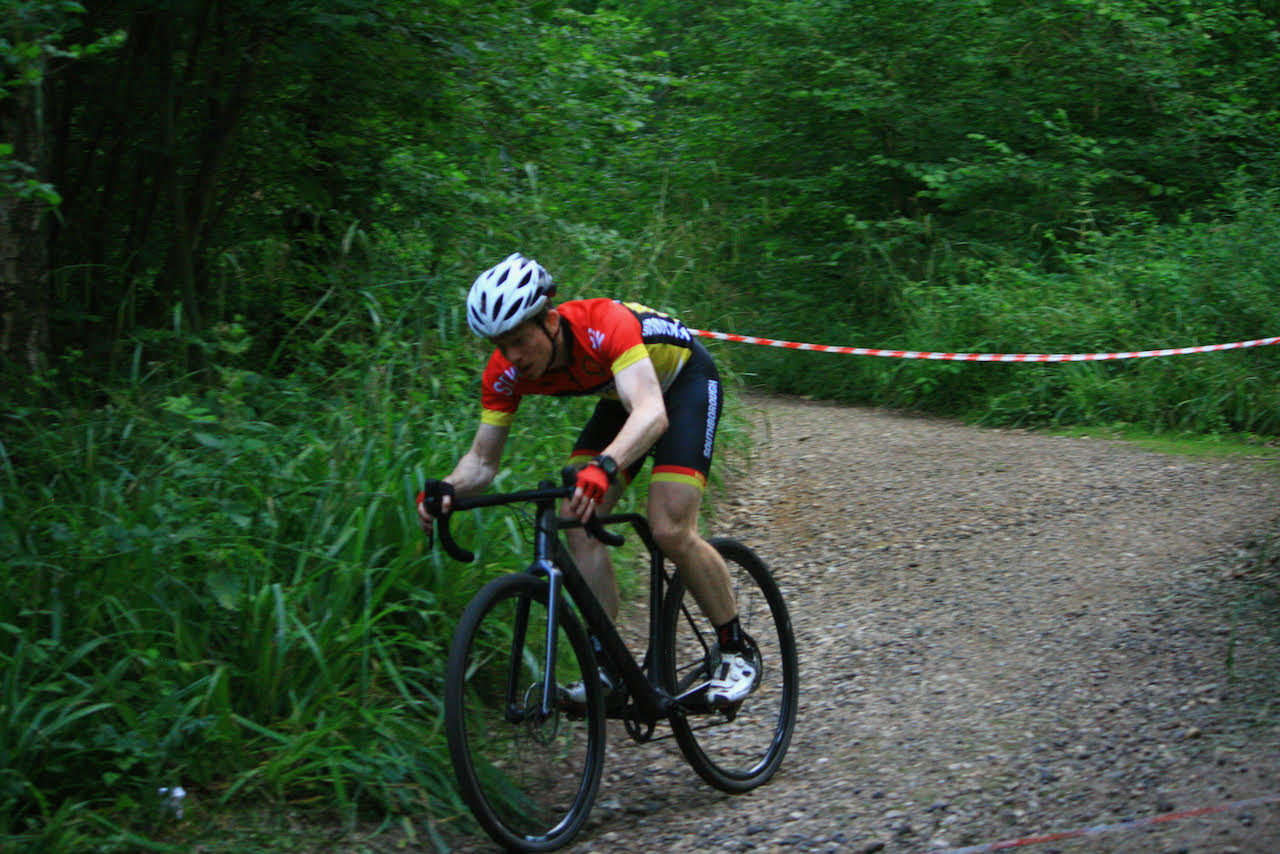
Sean has old school cycle touring in his blood, with a coast to coast USA ride and a number of month-long European tours in his very relaxed palmares. Also an enthusiastic midpack club cyclocross and XC racer, he loves his role as a junior cycle coach on the Kent/Sussex borders, and likes to squeeze in a one-day unsupported 100-miler on the South Downs Way at least once a year. Triathlon and adventure racing fit into his meandering cycling past, as does clattering around the Peak District on a rigid Stumpjumper back in the day.
Height: 173cm
Weight: 65kg
Rides: Specialized Chisel Comp; Canyon Inflite CF SLX; Canyon Aeroad; Roberts custom road bike
